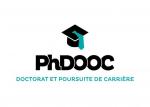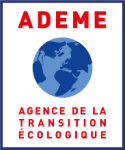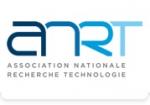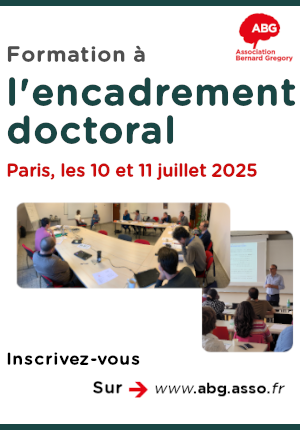Comparison of fish population evolution according to domestication environments
| ABG-132520 | Thesis topic | |
| 2025-06-15 | Public/private mixed funding |
- Agronomy, agri food
- Biology
Topic description
Background
Today, aquaculture is a key sector supporting global food security, particularly through fish production. However, current global aquaculture remains heavily dependent on a limited number of species. This reliance poses ecological, economic, and food security challenges, ultimately threatening the long-term sustainability of the sector. To address these concerns, diversifying the range of farmed species has been identified as a strategic priority to enhance the resilience and sustainability of aquaculture.
Domestication is a central strategy in this diversification effort, as it enables the development of production for new species. It is a gradual process by which a population adapts to captive conditions across generations, resulting in phenotypic changes driven by human control over resources, reproduction, and environmental conditions. These phenotypic shifts are also shaped by a combination of natural selection under farming conditions, the relaxation of selective pressures present in the wild, and deliberate artificial selection by humans.
Despite a growing body of research on animal domestication, the successful development of new fish species production remains a major challenge. Domestication is a complex, often poorly controlled process, and many attempts fail. These failures may stem from the species’ inability to adapt to rearing conditions, from unmet expectations regarding reproduction and growth or market value, or from economic, ethical (e.g., animal welfare), or regulatory constraints. Understanding the evolutionary dynamics of domestication and their drivers is therefore essential to support the diversification and sustainability of aquaculture.
Numerous studies have documented the consequences of domestication on fish phenotypes. Overall, domestication is known to affect behavior (e.g., increased docility, reduced predator avoidance), morphology (e.g., faster growth, reduced sensory structures and brain size, depigmentation), physiology (e.g., attenuated stress responses, altered immune function), and phenology (e.g., earlier sexual maturity). These changes may result from genetic alterations (e.g., selective sweeps, transcriptome alteration) or epigenetic mechanisms (e.g., changes in DNA methylation). However, our understanding of the domestication process and its effects remains incomplete. In particular, the influence of different aquaculture production systems on the trajectory of domestication, and the associated phenotypic and molecular mechanisms, has received limited attention in fish research.
Aquaculture production occurs under a wide range of conditions—intensive vs. extensive, monoculture vs. polyculture, with formulated feed vs. live prey, in controlled indoor environments (e.g., recirculating aquaculture systems) or in uncontrolled outdoor systems (e.g., ponds), with or without selective breeding programs. These diverse conditions create a variety of selective environments, each potentially shaping different domestication trajectories and phenotypic outcomes over generations. Moreover, variations in environmental parameters across production systems can induce genetic and epigenetic modifications, even across generations.
Since domestication can lead to phenotypic changes that may either enhance or hinder aquaculture performance (e.g., in terms of predator avoidance, growth rate, stress response, reproductive capacity or disease resistance), investigating the potential for parallel (or divergent) evolution within a species under different farming conditions could provide critical insights. Such studies would help to identify (i) the consistent phenotypic consequences of domestication across systems, and (ii) whether specific farming practices are more likely to induce trait changes that are beneficial or detrimental for aquaculture.
Since 2020, the laboratories L2A, URBE, IAM, and BAU have been jointly developing a research program as part of an international partnership between the University of Lorraine and the University of Namur. This program aims to better understand the process of fish domestication and its consequences during the very first generations born in captivity, using zebrafish (Danio rerio) as a model species.
Ph-D objective
The objective of the PhD project is to compare the phenotypic evolution and underlying molecular mechanisms in three zebrafish stocks derived from the same ancestral population but reared in three distinct domestication environments. These environments will be designed to mimic common aquaculture systems: (i) intensive monoculture, (ii) extensive monoculture, and (iii) intensive polyculture. Each will differ in practices such as environmental enrichment, feeding regime (artificial feed vs. live prey), and social composition.
Fish rearing will be conducted at the Plateforme Expérimentale en Aquaculture of the University of Lorraine by the Ph-D student and the L2A technical staff. The Ph-D student will develop an integrative phenotyping approach that considers key traits relevant to aquaculture, including growth, reproductive performance, stress responses, and aggressive behavior.
Given that adaptation during domestication may involve genetic, genomic, and epigenetic processes (e.g., genetic variation, selective sweeps, DNA methylation, transcriptome alteration), the Ph-D student will explore multiple molecular layers. This includes analyzing changes in genetic diversity and genome organization, variations in DNA methylation profiles, as well as transcriptomic and proteomic regulation.
Key references
Chevalier et al. Biol. Res. 2024, 57,67
Diakos et al. Scient. Rep. 2024, 14, 21036
Milla et al. Rev. Aquac. 2021, 13, 388–405.
Ribas & Piferrer Rev. Aquac. 2014, 6, 209–240.
Teletchea & Fontaine. Fish Fish. 2014, 15, 181–195.
Starting date
Funding category
Funding further details
Presentation of host institution and host laboratory
Créé en 2023 et composé de 18 enseignants-chercheurs rattachés à plusieurs composantes d’enseignement de l’Université de Lorraine (ENSAIA, Faculté des Sciences et Technologies, IUT Nancy-Brabois), de 9,5 personnels BIATSS et d’une dizaine de doctorants en moyenne, le Laboratoire Animal et Agroécosystèmes (L2A) est une unité de recherche de l’Université de Lorraine (EA 3998) sous contrat avec INRAE (USC 340, Département Physiologie Animale et Systèmes d’Elevage PHASE). L2A est rattaché au pôle scientifique « Agronomie, Agroalimentaire, Forêt » (A2F) et à l’école doctorale « Sciences et Ingénierie des Ressources Naturelles » (SIReNa).
L’objectif global de l’unité est de contribuer au développement de systèmes d’élevage plus durables et plus efficients en améliorant leur résilience face aux contaminations chimiques (micropolluants) et en valorisant la biodiversité animale (domestication de nouvelles espèces, développement de la polyculture). Nous ciblons en priorité certains systèmes d’élevage (piscicole, avicole, porcin et ruminants) et certains territoires (ex : Antilles pour la contamination à la chlordécone). Notre unité est structurée en deux équipes : DAC (Domestication en Aquaculture Continentale) et MRCA (Micropolluants et Résidus dans la Chaîne Alimentaire).
PhD title
Country where you obtained your PhD
Institution awarding doctoral degree
Graduate school
Candidate's profile
Compétences en biologie aquatique, biologie moléculaire, physiologie, sciences de l'évolution
Vous avez déjà un compte ?
Nouvel utilisateur ?
Get ABG’s monthly newsletters including news, job offers, grants & fellowships and a selection of relevant events…
Discover our members
 PhDOOC
PhDOOC  Tecknowmetrix
Tecknowmetrix  ADEME
ADEME  SUEZ
SUEZ  Ifremer
Ifremer  Nokia Bell Labs France
Nokia Bell Labs France  MabDesign
MabDesign  Aérocentre, Pôle d'excellence régional
Aérocentre, Pôle d'excellence régional  TotalEnergies
TotalEnergies  Laboratoire National de Métrologie et d'Essais - LNE
Laboratoire National de Métrologie et d'Essais - LNE  Généthon
Généthon  ASNR - Autorité de sûreté nucléaire et de radioprotection - Siège
ASNR - Autorité de sûreté nucléaire et de radioprotection - Siège  MabDesign
MabDesign  Institut Sup'biotech de Paris
Institut Sup'biotech de Paris  CASDEN
CASDEN  ANRT
ANRT  CESI
CESI  ONERA - The French Aerospace Lab
ONERA - The French Aerospace Lab  Groupe AFNOR - Association française de normalisation
Groupe AFNOR - Association française de normalisation







